

Time-Sensitive Networking (TSN) is a set of standards under development by the Time-Sensitive Networking task group of the IEEE 802.1 working group. The IEEE 802.1Q defined standard technology for data link layer to provide deterministic messaging on standard Ethernet. TSN allows technicians to understand exactly how long traffic takes to travel across the networks, which means understanding the nature of any delays(latency) and transit time variations(jitter).
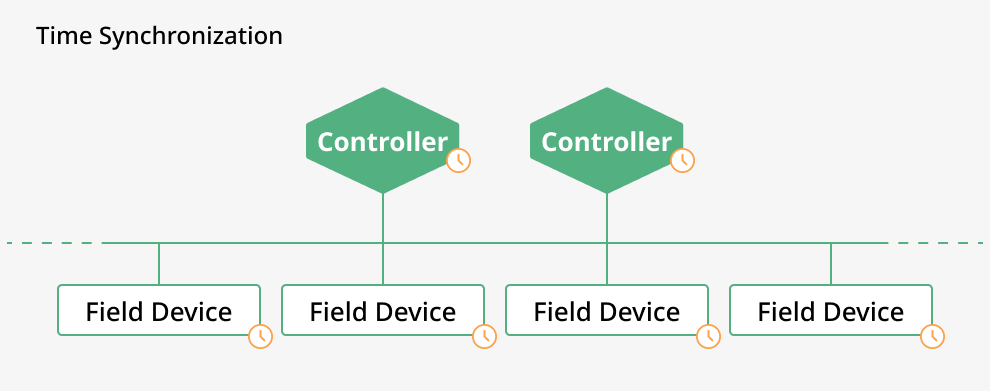

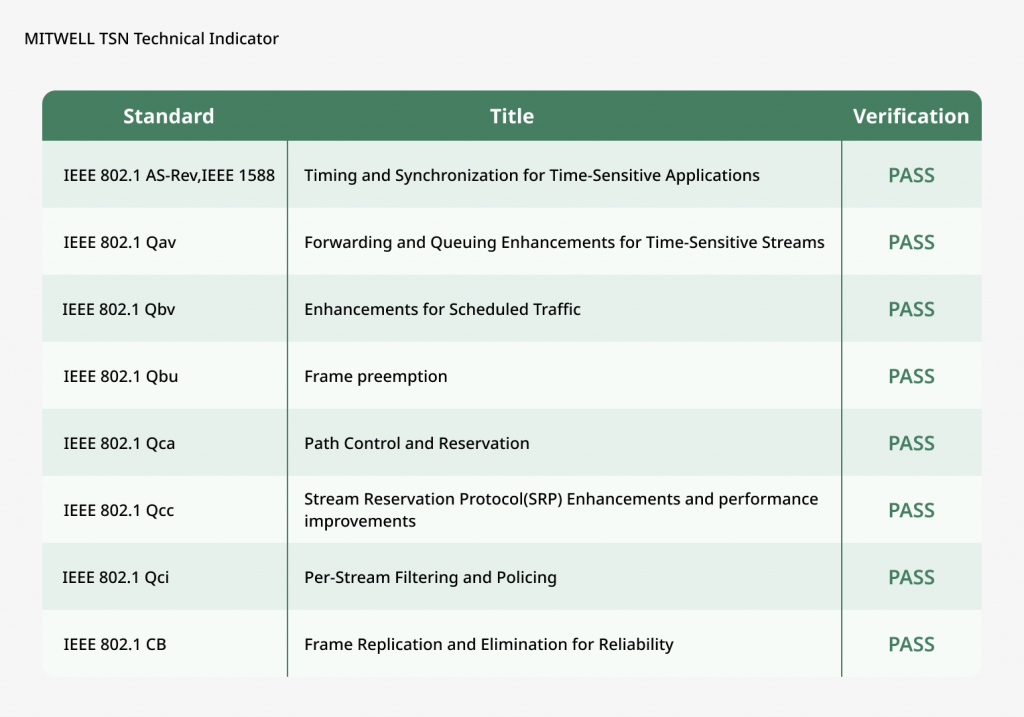
Fully distributed model
Fully centralized model
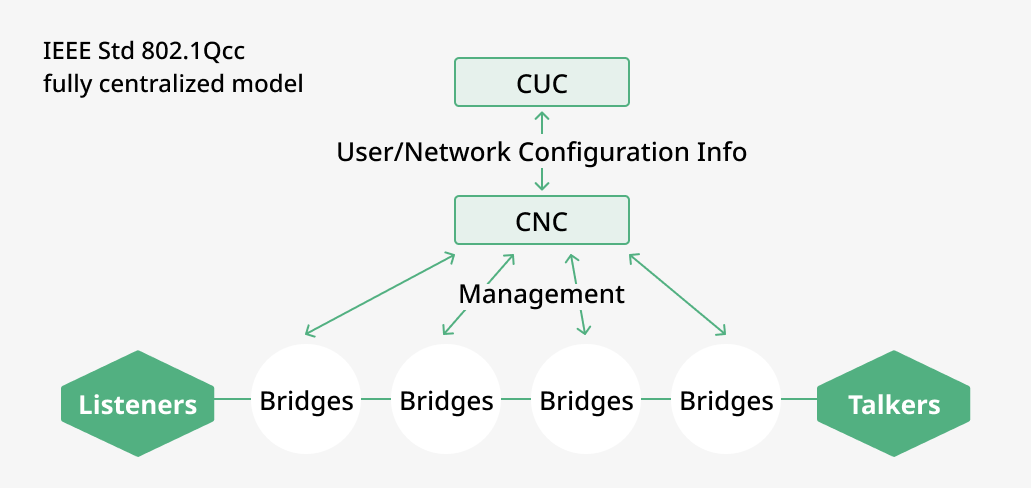
Many TSN cases require significant user configuration in the end stations that act as Talkers and Listeners. In order to accommodate this kind of TSN use case, as shown in the figure below, the fully centralized model enables a Centralized User Configuration (CUC) entity to discover end stations, retrieve end station capabilities and user requirements, and configure TSN features in end stations. The protocols that the CUC uses for this purpose are specific to the user application.
MiTwell Group focuses on this structure and develops the CNC control component. The diagram below shows a graphical representation of the fully centralized model:
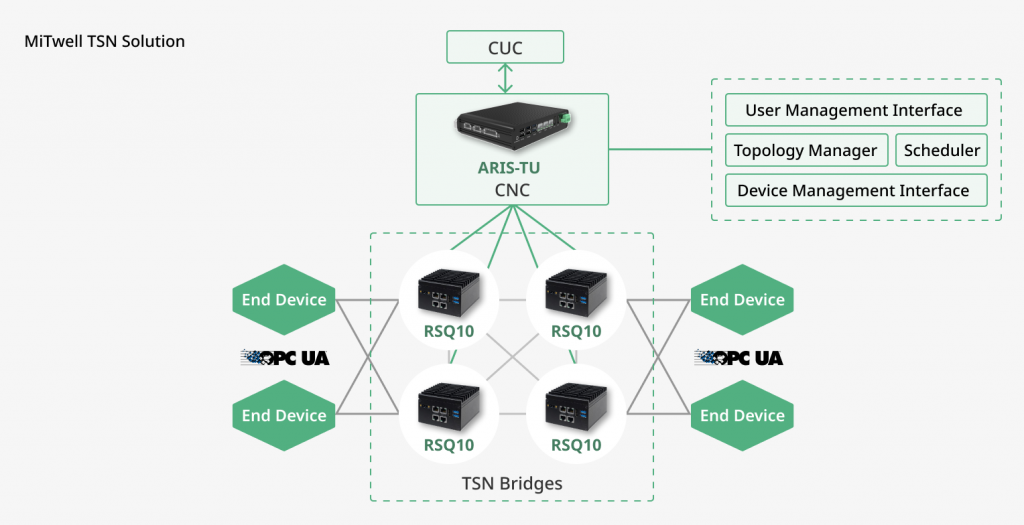
Used to communicates with the CNC and the end devices.
CNC is responsible for receiving the request from CUC and analyzing the content of the request to do corresponding operation.
Accept the management of CNC and report the topology status to facilitate the switching of dynamic routing by CNC. Our embedded hardware device has good communication capabilities through more than 4 TSN ports connections and the pre-built Yocto TSN BSP (RT-Kernel).
The IEEE 802.1 CB protocol defines a method for implementing redundant transmission in the network. The full name of the protocol is Frame Replication and Elimination for Reliability (FRER). First build an IEEE time-sensitive network with FRER function. When using FRER to achieve redundancy, the transmission of TSN network data streams has redundant paths—alternative paths, as shown in the figure below:

The data flow on the TSN talker side executes the data flow split function on the first TSN bridge, which can be divided into blue data flow and green data flow. The two data flows take different paths to reach the TSN bridge, the data flow is merged and then forwarded to the TSN listener.

Use FRER to route data along different paths for high reliability. When it is in normal operation, the data splitting technology can be implemented. Its different data flows take different paths and can reach the TSN listener terminal more quickly. When a certain TSN bridge is damaged and cannot continue to transmit, all data streams can be quickly changed to another path to achieve high fault tolerance and high reliability.
Integrate the 5G private network system and the core network of the open Free5GC (NYCU) 5G private network, our TSN Bridge with 5G modules can effectively build a TSN network. The transmission between each other with clock synchronization technology, which can achieve low-latency and high-bandwidth data transmission. After using the 5G module, the data can be transmitted to the UAV through the 5G RAN. In order to increase the network connection characteristics of the overall system, the WiFi 6 function can be set on the UAV, which can carry out the WiFi D2D communication capability.
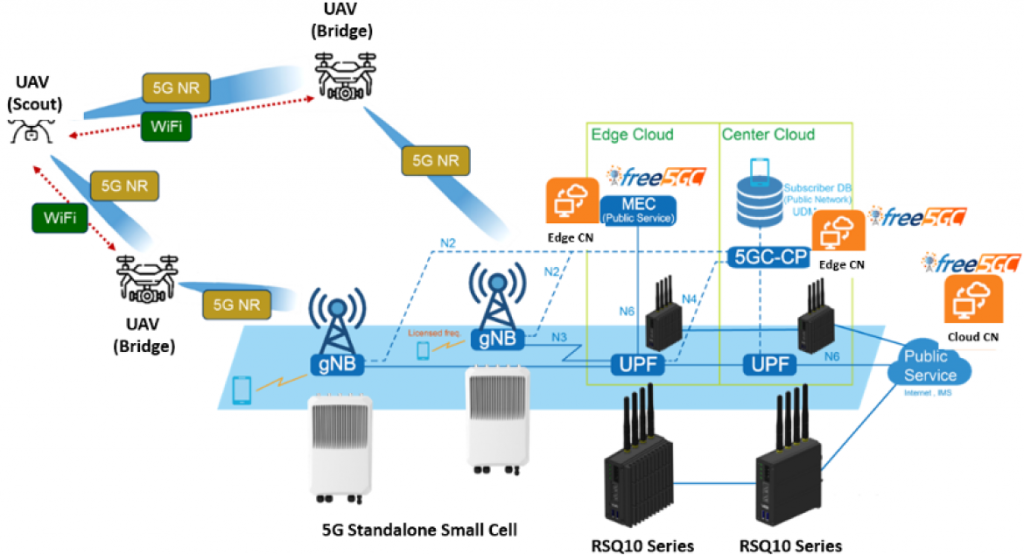
We expand the 5G wireless transmission function with low latency, high bandwidth and multi-connectivity, and integrate the fault tolerant TSN IEEE 802.1 CB FRER function. Under the integration of dual-core network architecture and centralized network configuration (CNC), a military UAV system integrates the high fault-tolerant technology of 5G base station.

Copyright© MiTwell, Inc. All rights reserved.